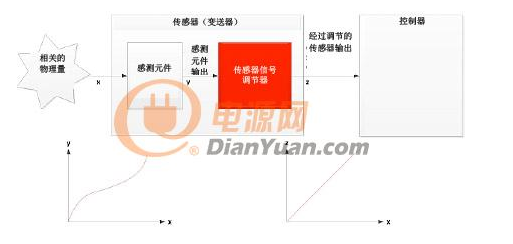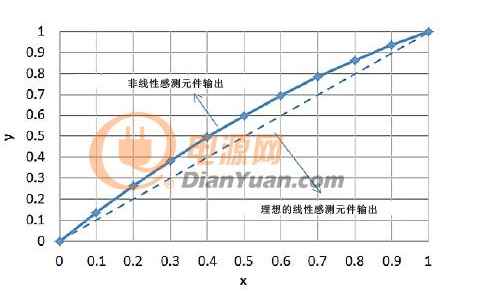The sensing element plays a crucial role in converting a physical quantity into an electrical signal. For instance, a Wheatstone bridge can be employed to transform pressure into an electrical output. However, many sensing elements inherently exhibit non-linear behavior, meaning their output is not directly proportional to the physical quantity being measured. Instead, their response changes in a non-linear fashion as the input varies.
To address this non-linearity, a sensor signal conditioner is used. This component helps correct the irregularities in the output of the sensing element, making it more suitable for further processing or control. In this article, we explore two commonly used techniques for linearizing sensor outputs: 1) look-up tables (LUTs) or interpolation, and 2) polynomial fitting or curve modeling. We compare these methods and analyze the trade-offs between them, such as accuracy, computational complexity, and implementation cost.
A sensor or transmitter typically consists of a sensing element and a signal conditioner. The sensing element, such as a Wheatstone bridge or a hot wire anemometer, is responsible for converting physical parameters like pressure or air mass flow into electrical signals. Meanwhile, the signal conditioner processes the raw output from the sensing element, correcting imperfections such as non-linearity, temperature drift, and dynamic response. Figure 1 provides an overview of the system architecture.

**Figure 1:** Block diagram of the sensor showing the relationship between the physical quantity (x), the sensing element output (y), and the conditioned output (z). As illustrated, the signal conditioner adjusts the non-ideal characteristics of the sensing element, including non-linearity, ensuring that the output (z) is more accurate and reliable for use in control systems.
In this paper, we focus on second-order nonlinearity, a common form of deviation in sensing elements. Although nonlinear behaviors can vary, understanding second-order nonlinearity allows us to develop effective correction strategies using signal conditioners. The mathematical relationship between the input (x) and output (y) of a second-order nonlinear sensing element can be expressed as:
$$ y = a + b \cdot x + c \cdot x^2 $$
Where:
- $ a $: Offset of the sensing element, representing the output when the input is at its minimum.
- $ b $: Span of the sensing element, defined as the difference between the maximum and minimum outputs.
- $ c $: Second-order nonlinearity coefficient.
- $ x $: The measured physical quantity.
- $ y $: The output of the sensing element, which depends on $ x $.
For example, consider a normalized input range of $ x = 0 $ to $ x = 1 $, with $ a = 0 $, $ b = 1 $, and $ c = 10\% $ of full scale (FS). In this case, the output function becomes:
$$ y = x + 0.1 \cdot x^2 $$
As shown in Figure 2, when $ x = 0.5 $, the output is $ y = 0.6 $, while a perfectly linear output would have been $ y = 0.5 $. This discrepancy represents a 10% nonlinearity at the midpoint, causing a noticeable bulge in the output curve.

**Figure 2:** Output of a nonlinear sensing element. Note the bulging effect, which highlights the non-linear behavior. This type of deviation must be corrected to ensure accurate and reliable measurements in real-world applications.
Composite Insulators
The Composite Insulator are made of glassfiber epoxy core rod, silicone rubber shed and metal fittings.
The silicon rubber shed adopt the whole packing pressure technique, can solve the key problem – interface electric spark puncture, which would affect the reliability of composite insulator.
Connection of the glassfiber rod and metal fittings adopts the pressure welding technique of the international advanced level, and have the full automatic sound wave detection of defects system, high intension, beautiful outline, small volume, light weight, and the metal fitting of galvanization can corrosion prevention and exchange used with porcelain insulator.
Composite Insulators,Insulation Resistance,Transmission Lines Insulator,Line Post Type Insulator
Jilin Nengxing Electrical Equipment Co. Ltd. , https://www.nengxingelectric.com